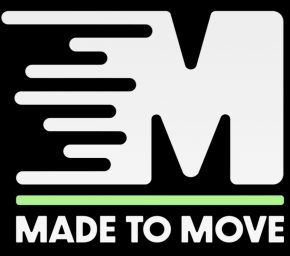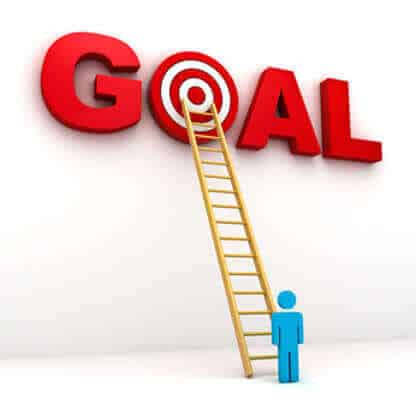Welcome back!
So this is now 2022, I’d like to wish you all a very happy new year, I hope you had a great time have your family over the Christmas period.
What I want to focus on is goal setting and how to assist you to be able to set a goal. This is to be able to guide you to be aware of what’s ahead in the year, and what you need to be doing outside of your chosen sport or regime to help you make the right decision and make sure that you stay injury-free.
January and February tend to be the boom in the fitness industry and is often due to new motivations, determinations, and a fresh mindset. You might have a certain event throughout the year that you want to be able to complete or maybe to be fitter and healthier.
But let’s face it, the last few years haven’t been the best years for many. And that’s because again, what’s going on with COVID-19. So. I beleive myself and people like yourself are able to have a fresh start and look at how we can change our mindset to have long-term success in what we are planning to do. So with that in mind, let’s look at some points that may help you throughout this year.
Why people tend to fail on the new goals:
The biggest reason why people fail to hold out and succeed in their goals continue for the year tend to be because they’re underprepared or maybe get injured during the process, maybe they don’t see instant results, which leads to them to be frustrated. So I’ve got four action points we’re going to go through to help you create a goal, to be mindful of what you need to be doing, and three, to hopefully enjoy the journey as well. So let’s get started.
1. Think about what it is you want to do this year
So point number one, think about what it is you want to do this year. Now this might be a new sport, it might be a challenge, you might be wanting to gain or lose weight, you might want to get fitter, faster, stronger or another certain characteristic. So with that in mind, do you know where you need to start and where you need to be? It’s always important to know where you need to be.
If it’s a challenge, for example, it might be a race. What timeframe do you want to be coming in? If it’s a certain weightlifting competition, what weight do you want to achieve? What do you need to weigh to qualify for that? These things are important because without having them, you have no clear strategy in terms of where you’re going to go and where you need to be.
So what we need to be looking at is also a wider picture. And while you’re choosing a certain goal, there needs to be some kind of emotional attachment to this to help motivate you. So again, it might be you’re trying to raise funds for a charity. So the reason why doing this is maybe due to close contacts that may face difficulty close to your chosen charity. It might be that you’ve got maybe some illness that you want to be able to reduce the impact of by being more healthy.
So if you start to attach an emotional connection to this certain goal, again, it’s going to help you to be able to stick to this throughout the year.
2. Think about what it is you need to know to prepare
Point number two, let’s think about what it is you need to know to be able to prepare and what is also maybe the bare minimum. This day and age, we’re all very busy in terms of work. family and our chosen lifestyles. So we might want to be able to just be able to do the bare minimum to be able to achieve our goal. It might not be able to state what it is you need to do for that part you need to? Do you need to work on a characteristic to ensure you get the most out of that goal? If we’re looking in terms of movement quality, is its mobility? Is it flexibility? Is it balance? Is it strength you need to develop?
Have you got enough of these characteristics to be able to allow you to succeed in this chosen goal? So for example, if it’s being able to squat effectively, have you got enough range of motion in your lower body? Have you got enough stability in the core to be able to hold you effectively? These points are going to matter in terms of optimal performance, but also, being able to reduce future injuries. Are you going to working out from home? Are you going to need to buy suitable equipment or can this be bodyweight? Do you have the bare minimum equipment to get by? Often, you see people with new running equipment, it might be new clothing or trainers which spur them on.
So again, have you got enough of these things in place to allow you to do your job and your goal correctly to be able to succeed? Do you need to buy a gym membership to do some additional work? Or can you do this from home? Do you need to hire a coach to help you with the motivation to set a plan out? It might be you need even just have a consultation to be able to get an understanding from a trainer or coach so that they can allow you go on your way, these people are here to help you. So be able to use them effectively it is important.
3. How much time do you have? Do you need?
Step number three, how much time do you have? And how much time do you need? I’m talking about in terms of scheduling time out of your diary to be able to fulfill this goal, or are you’re just going to try and wing it? I think the important part is, if we don’t have this in a diary and don’t have it blocked out, things can tend to crawl in and get in the away. So it’s very important that you do this. Have you left enough timeframe in terms of what you want to achieve?
Does it need to be three months, six months, 12 months, maybe it needs to be more than a year if you’re looking at a wider picture? So again, once you’re understanding what timing you need, you can then start to schedule around that. And this final part is to look at, have you decided what day, what time you’re going to do this? Being able to write it very clearly is going to allow you to effectively follow the certain steps needed for this goal. Without doing this is where we might tend to fall off. Okay.
4. Make a plan!
Step number four is going to be the final step. What I want you to do is grab a pen, grab a notepad, and we’re going to write down a plan together here. If you struggle to visualise what we’re going to do, then please see the attached a goal-setting spreadsheet. We are going to break down the month of the year for you. So you can just fill in the dots.
Once we got a piece of paper, it might be an a4 piece of paper, I want to turn it landscape. And then within that, we want to spread the 12 months of the year crossed along the top of the piece of paper. So, from January to December, write each and every single month down. Now you’ve got those 12 months, what would you do is break this into four sections. So just below this, I want you to put into four quarters. So those four quarters are going to be spread out throughout the year, starting from January, going to the end of March, and so on so forth.
Once you filled that, we’re going to visualise the year into more manageable components of four sections. And then from these four sections, we can then look at, we’ve got three months and each quarter, we’ve got 90 days, which again makes it more manageable to understand. So once we’ve got this, we can then start to visualise you breaking up this year.
So if we’re looking at in a goal of doing 20 Pull-Ups, what we can do is start to reverse engineer this. So say by the end of December, I want to be able to block out a full 20 reps without stopping. So how can we break that down into manageable sets of repititons. If you can’t even do one pull up, then that’s what your goal is going to be during the first month or so for January. And then what we can do is manipulate this by using bands or different pieces of equipment to help support you to do more repetitions, build some strength and endurance and again throughout the year by chipping away and hitting those certain mini-goals within the year, you’ll be able to achieve your final goal.
If we look into running programmes, if we’re looking at developing your performance to run a half marathon, then what we want to do is a reverse engineer from the certain distance or time that you’ve got. So for a half marathon, it’s 13 miles. So if we tend to look at around a 16-week programme to do your running, what you want to do is put the date in or when you’re going to run the half marathon. And then we’re going to reverse engineer your distance in terms of what you need to cover backwards towards January. So if you’ve got a run in maybe May, you can reverse engineer to start running in January it might be doing a couch to 5k to start, and you just very slowly step load the distance each week, each month until you reach a certain goal.
Finally, it might be you want to improve your flexibility. It might be just simply wanting to be able to touch your toes, then what you want to do is have some measurement of how far away you are from doing that now, and obviously than having zero or maybe minus zero to be able to reach past your toes. And then from there, you can then break down mini goals within a year, within the month and the week to allow you to reach that goal.
So the important thing to remember is you need to be able to understand the steps and break it down into more manageable pieces. And then once we’ve done that, we can then understand that we can achieve a certain goal, we can stay more closely aligned to it, we’re not drifting away or becoming less motivated.
A very good friend and a personal trainer of mine, Ross Shore once said:
“You can do anything, but you can’t do everything.”
As a keynote to take away, I hope you found it very useful.
If you’ve got any comments or you would like to see any content such as this, please do let me know in the comments secion below.
I wish you all a very happy new year and good luck.
Rory.

